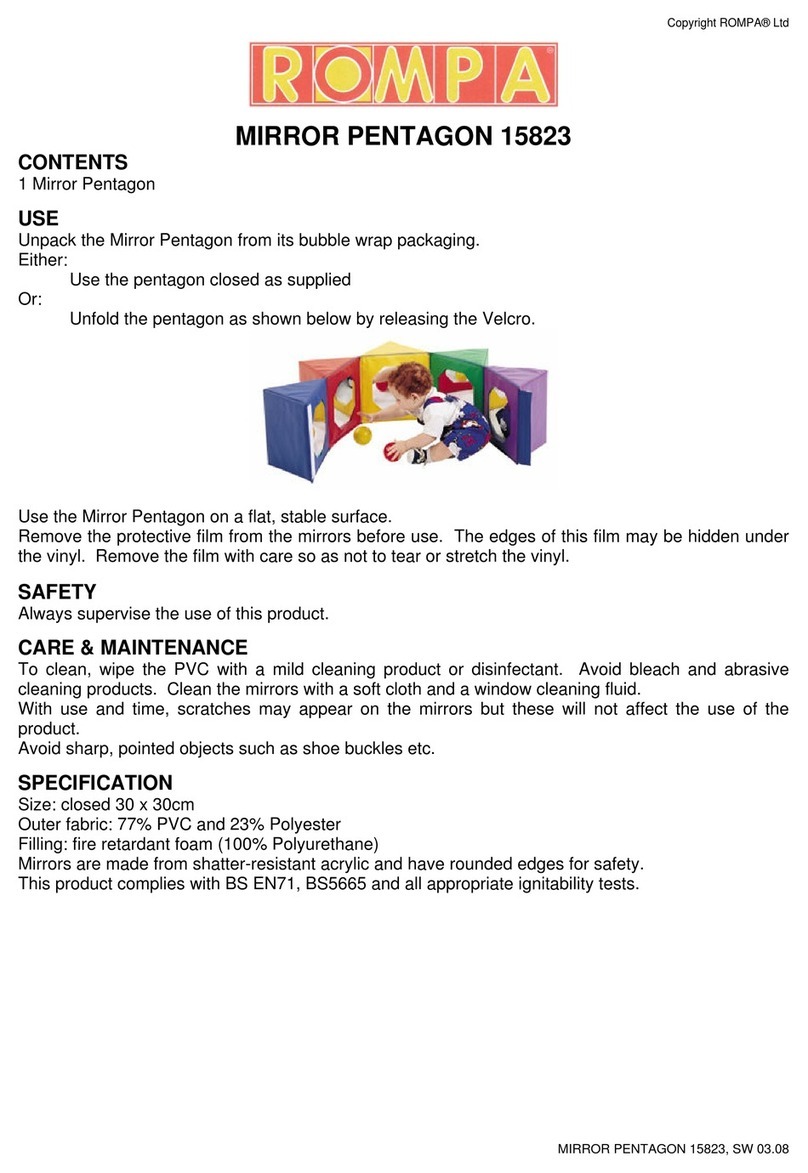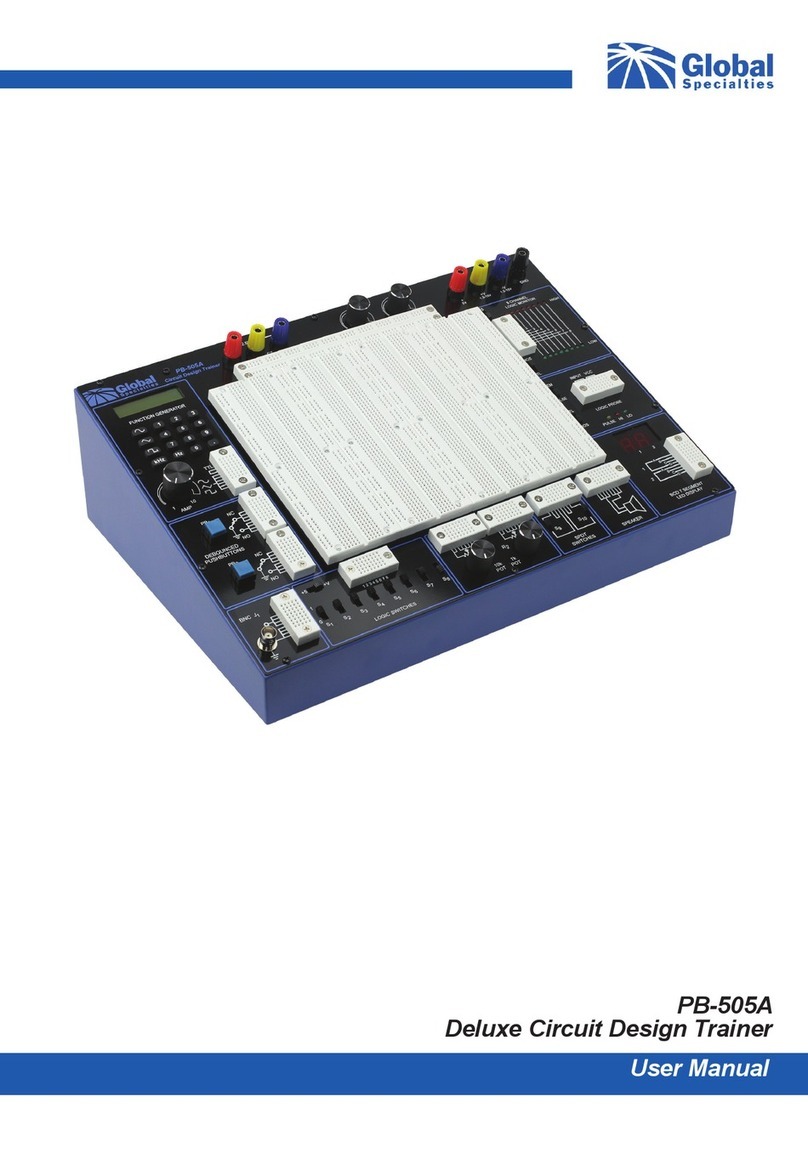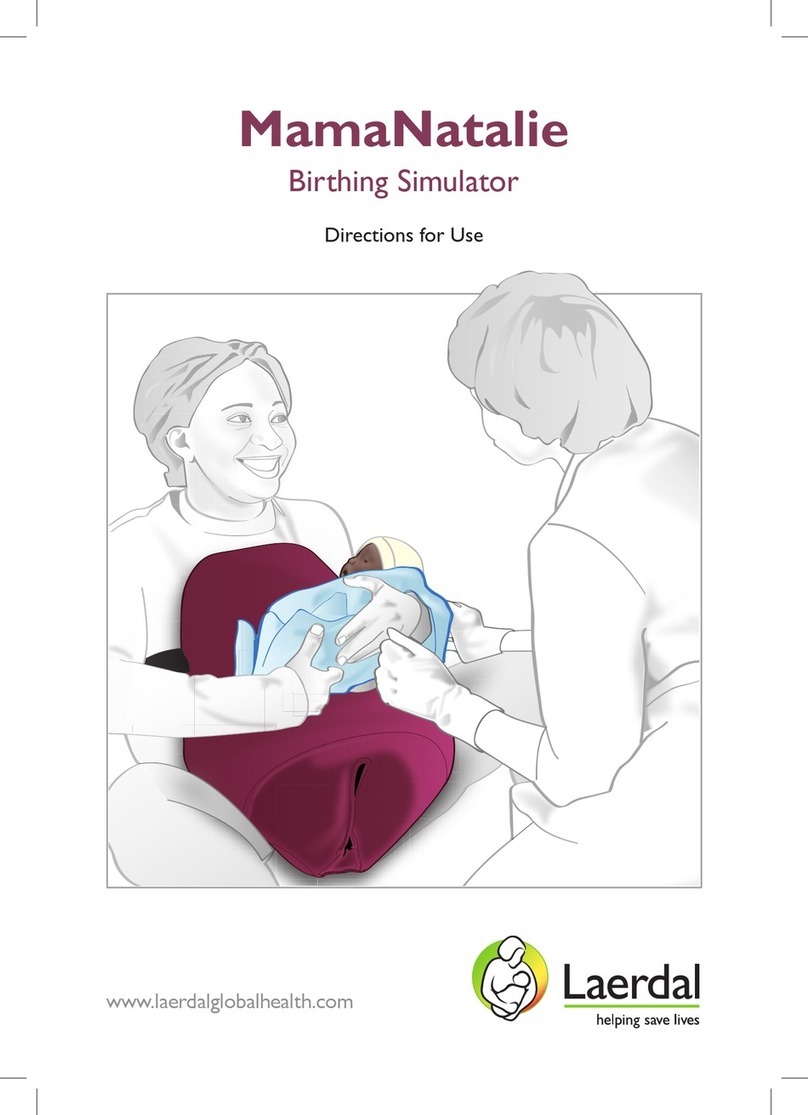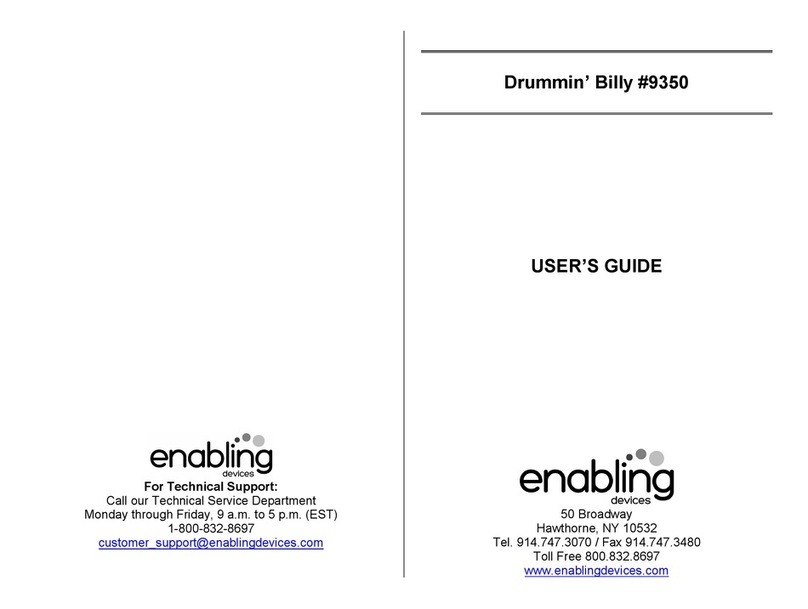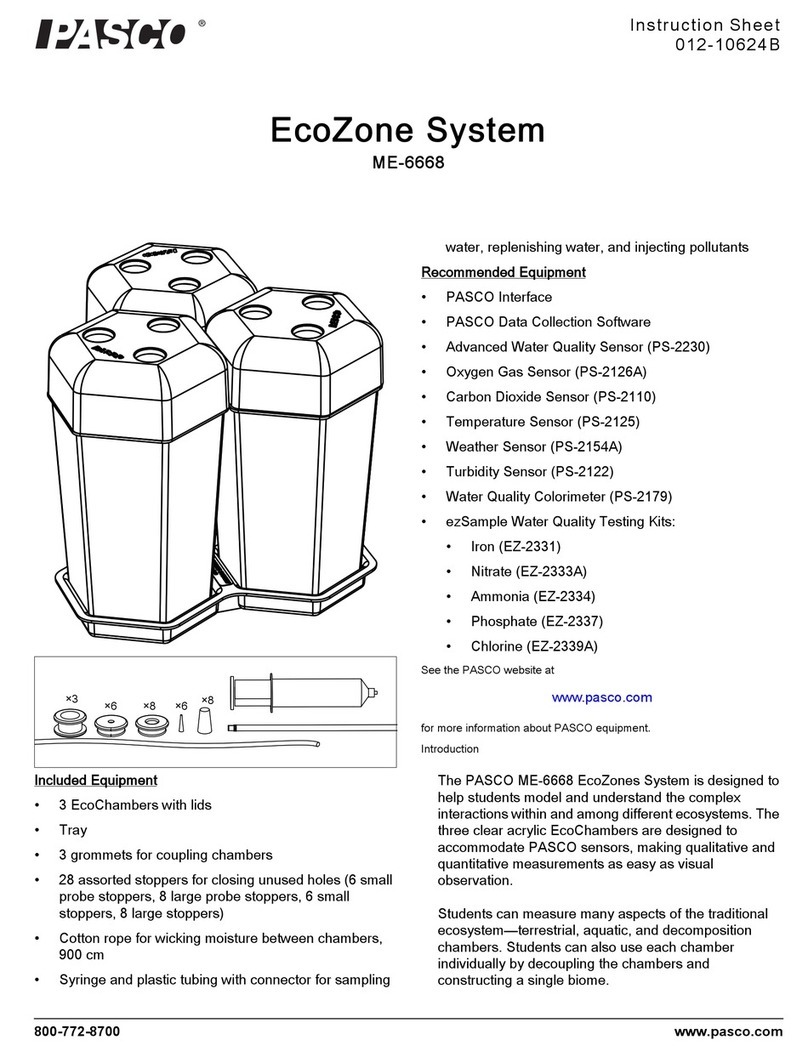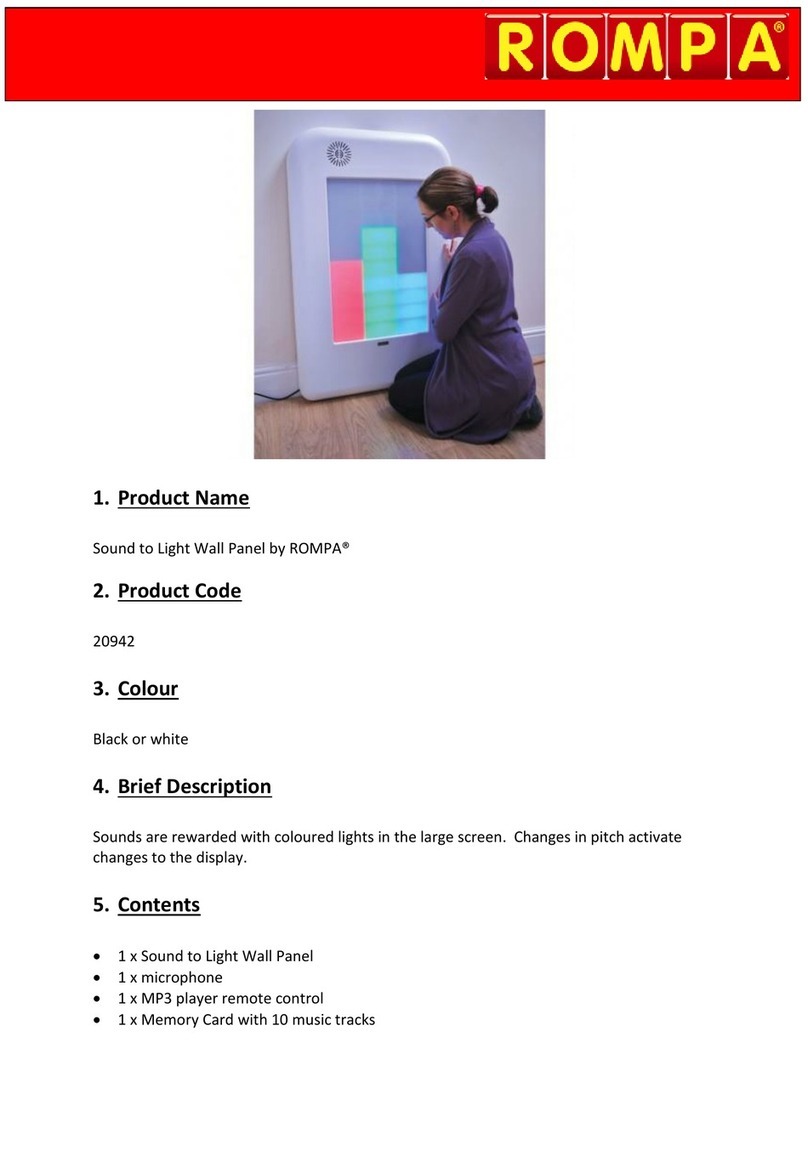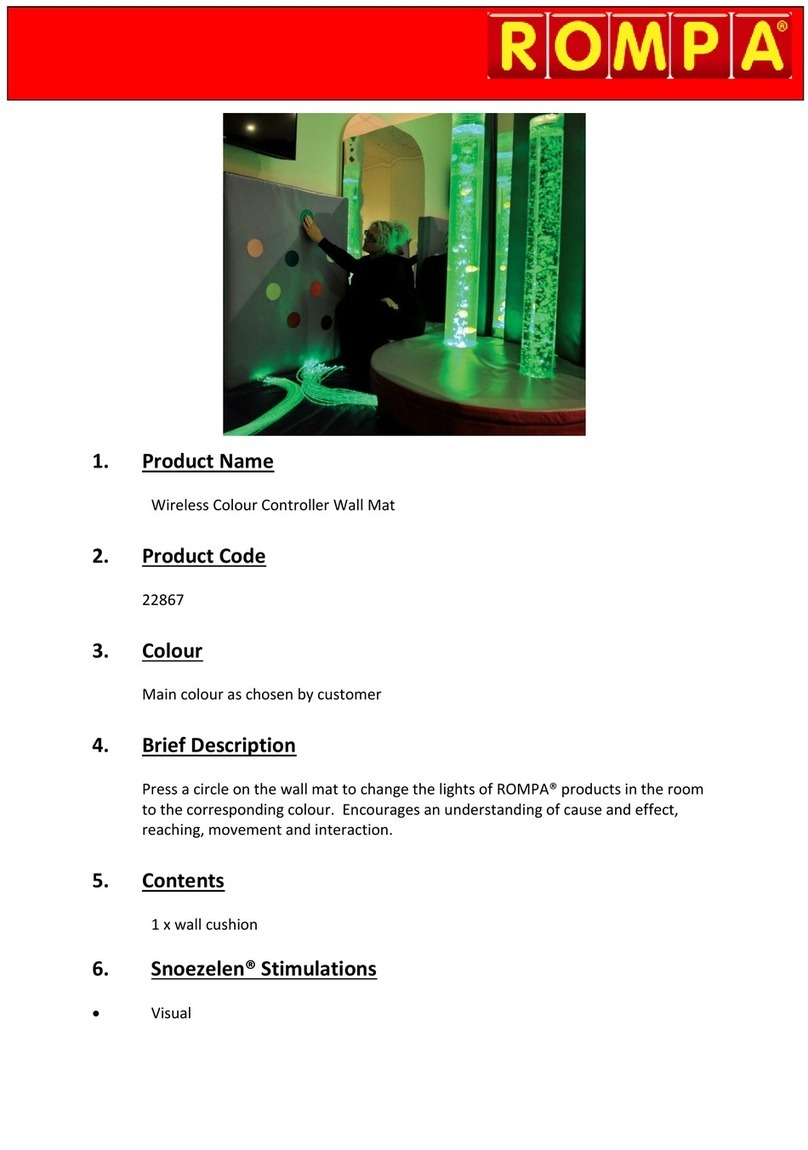Cleaver Scientific runVIEW Real-Time User manual

runVIEW RealTime
Horizontal System


15/11/2018 Page 1
runVIEW Real-Time
Horizontal
Electrophoresis Units
Instruction Manual
Catalogue Numbers
CSL-RVMSCHOICE7
CSL-RVMSCHOICE10
CSL-RVMSCHOICE15
CSL-RVMSCHOCIETRIO
Record the following for your records:
Model _____________________
Catalogue No. _____________________
Date of Delivery _____________________
Warranty Period _____________________
Serial No. _____________________
Invoice No. _____________________
Purchase Order No. _____________________

15/11/2018 Page 2
Contents
Instruction Manual 1
Catalogue Numbers 1
Contents 2
Safety Information 3
Environmental Conditions 4
Symbols 4
Packing List 5
Specifications 6
Operating Instructions 7
Overview 7
Installation 7
Setting up the Horizontal Gel Tank 7
Fitting Electrodes 7
Fitting Loading Guides 7
Control Interface 8
Gel Preparation 9
Gel Pouring 10
Casting Dams 10
Flexicaster 10
Tape 11
Running the Gel 12
Stain Compatibility 13
Solutions 14
References 14
Troubleshooting 15
Gel Issues 15
runVIEW Issues 16
Care and Maintenance 17
Cleaning Horizontal Units 17
RNAse Decontamination 17
Ordering information 18
Comb options 18
Related Products 20
Warranty 21

15/11/2018 Page 3
Safety Information
The runVIEW real-time horizontal DNA electrophoresis system has been
thoroughly tested and found to comply within the limits of CE regulation. It
has been manufactured using the latest technology and does not require
maintenance. When used correctly this unit poses no particular health risk,
although it can deliver dangerous voltage levels if used incorrectly.
Accordingly, this power supply must only be operated by fully qualified
personnel adhering to the guidelines laid out within this instruction manual.
Although this power supply is equipped with all necessary safety features
against abuse and accidental failure, caution should always be exercised
when working with high voltage equipment. Any individual intending to use
this instrument should read the entire manual thoroughly before operation.
1. Read the instruction manual thoroughly before use.
2. Never touch the power outlets with any conductive object (e.g. naked
metal wire) other than properly insulated power supply cables.
3. Do not spill liquid or insert metal objects inside the power supply.
4. Never block the ventilation holes or place the unit in any enclosure
unless there is adequate ventilation; never expose the power supply to
a direct heat source.
5. Never touch any part of the power supply assembly (i.e. power supply,
cables or electrophoresis tank) before switching OFF the power supply.
6. Never manipulate with wet hands.
7. Do not connect to ground any of the power outputs or the buffer within
the electrophoresis tank; the power outputs should be only connected
to an insulated electrophoresis tank equipped with a safety cover.
8. Do not connect any power supplies in series or in parallel.
9. Never open the back plate nor remove the cover, otherwise an
electric shock may result. Repairs should only be made by the
manufacturer or a service technician authorised by the manufacturer.
10. Never use this power supply if the safety cover is not in position
correctly.
11. Do not use the unit if there is any sign of damage to the external tank or
cover. Contact the manufacturer or supplier immediately to replace or
repair any damaged parts.

15/11/2018 Page 4
12. Never use the power supply in the presence of flammable or
combustible material as fire or explosion may result.
13. Ensure that the power supply is only connected to an earthed power
line. Do not cut and splice the power line. When removing the power
cord from the wall, unplug it by holding the plug attachment and not
by pulling the cord. Do not hold the plug with wet hands or gloves.
Environmental Conditions
This unit may only be installed and operated only under the following
environmental conditions:
1. For indoor use only
2. Relative humidity: ≤95%
3. Atmospheric pressure: 75 kPa – 106 kPa
4. Altitude: ≤2000 metres
5. Operating temperature: ambient to 40°C
6. Pollution degree: 2
7. Mains supply voltage fluctuations up to ±10% of the normal voltage
This apparatus is rated POLLUTION DEGREE 2 in accordance with IEC 664.
POLLUTION DEGREE 2, states that: “Normally only non-conductive pollution
occurs. Occasionally, however, a temporary conductivity caused by
condensation must be expected”.
Symbols
The symbols used on this unit are explained below. Indicates the
potential for electric shock. Consult the manual to avoid possible
personal injury or instrument damage.
Indicates disposal instruction.
DO NOT throw this unit into a municipal trash bin when this unit has
reached the end of its lifetime. To ensure utmost protection of the
global environment and to minimise pollution, please recycle this unit.

15/11/2018 Page 5
Packing List
All Models Include:
Base Station & Lid CSL-RVBSBVLID
Tank MS15TANK
Cable CSL-CAB
Combs 1 x MS15-4/16MC-3
1 x MS15-20/28MC-3
2 x MS15-4/16MC-1
4 x MS15-20/28MC-1
Specific models include:
CSL-RVMSCHOICE7 CSL-RVMSCHOICE10 CSL-RVMSCHOICE15 CSL-
RVMSCHOICETRIO
Tray MS15-UV7 MS15-UV10 MS15-UV15 MS15-UV7, MS15-
UV10, MS15-UV15
Casting
Dams
MS15-UVDAM MS15-UVDAM MS15-UVDAM 3 x MS15-UVDAM
Packing List Checked by: ________________________
Date: ________________________
The packing lists should be referred to as soon as the units are received to
ensure that all components have been included. The unit should be checked
for damage when received.
Cleaver Scientific is liable for all missing or damaged parts / accessories within
7 days after customers have received this instrument package. Please contact
Cleaver Scientific immediately regarding this issue. If no response within such
period is received from the customer, Cleaver Scientific will no longer be liable
for replacement/damaged parts.
Please contact your supplier if there are any problems or missing items.

15/11/2018 Page 6
Specifications
runVIEW Viewing Dock
Blue Light
Wavelength
470nm Timer 1-999 minutes with alarm
Voltage/
Resolution
25-150V / 1V Safety Device No load detection
Current/ Resolution 300mA / 1mA Operating
Temperature
Ambient to 40C
Power 30 W Dimensions 293 x 220 x 80 mm
Operating Mode Constant Voltage or
Current
Rated Voltage 100-240V, 50/60Hz
runVIEW Gel System
Gel Dimensions
(W X L)
15 X 7, 15 x 10 &
15 X 15cm
bluVIEW
Lid Design
Orange spectral emission filter
with condensation-free
viewing pane (Safe dyes –
e.g. runSAFE); Red version for
EtBr
Unit dimensions
(W X D X H)
26.5 X 17.5 X 9cm Combs - 1 x MS15-4/16MC-3
- 1x MS15-20/28MC-3
- 2x MS15-4/16MC-1
- 4x MS15-20/28MC-1
Buffer Volume 500ml Comb Thickness 1 & 3mm

15/11/2018 Page 7
Operating Instructions
Overview
runVIEW is an innovative system designed for real-time size fractionation and
recovery of nucleic acids. runVIEW can maximise the efficiency of DNA
recovery from EtBr and SYBR stained gels by minimising the number of steps
involved in post-electrophoretic purification. runVIEW consists of a multiSUB™
MSCHOICE system with bluVIEW lid, containing a spectral emission filter and
extractor fan within its viewing pane, and a base unit with integrated power
supply and blue LED gel illuminator.
Installation
Place the runVIEW on a sturdy and level, dry surface. Plug the power cord
into the back of the unit and mains power. The system is now ready for use.
Setting up the Horizontal Gel Tank
Fitting Electrodes
Note the position of the lid on the unit. This shows the correct polarity
and the correct orientation of the cables, black is negative and red
positive.
Remove the lid from the unit. Note if the lid is not removed, fitting the
cables may result in un-tightening of the gold plug and damage to the
electrode.
Screw the cables into the tapped holes as fully as possible so that there
is no gap between the lid and the leading edge of the cable fitting.
Refit the lid.
Fitting Loading Guides
These can be fitted to enhance visibility of the wells if desired. They can be
fitted to the white vinyl platform sheet or to the unit itself.
1. Seat the tray in the unit and note the position of the comb grooves. The
samples run black to red, but the trays can be used frontward or
backwards so ensure that the comb grooves closest to the black
electrode are marked.
2. Remove the tray.

15/11/2018 Page 8
3. Peel the back off the loading guide and carefully apply the loading
guide directly to the gel platform.
The unit is now ready to be used.
Control Interface
There are five buttons and four LED indicators on the faceplate.
Each LED indicates the activation status or mode of operation of the unit.
1. To select Voltage, Current or Time
2. To switch blue light ON or OFF
3. Increase selected parameter
4. Decrease selected parameter
5. Start / stop the program
To set the required voltage, current and time, use the mode button to
navigate between these parameters. The active parameter will be indicated
by a lit LED.
Use the up and down arrows to set the desired parameters.
Press the Start / stop button to start the electrophoresis run.
To activate the blue light for 10 seconds, press the blue light button once. To
permanently activate the blue light, hold the Blue light button for 3 seconds.

15/11/2018 Page 9
Gel Preparation
The Table below shows the volume of agarose solution required to make the
desired agarose gel for each unit tray size. For a standard 0.7% agarose gel,
add 0.7 grams of agarose to 100 ml of 1x TAE or TBE solution. The same 1X
solution should be used in the tank buffer solution.
Tray 15 x 7 cm 15 x 10 cm 15 x 15 cm
Gel volume for a 5mm thick gel 52.5 mL 75 mL 112.5 mL
1. Add the agarose powder to a conical flask.
2. Add the appropriate amount of 1x TAE or TBE solution from the table
above. To prevent evaporation during the dissolving steps below, the
conical flask should be covered with parafilm.
3. Dissolve the agarose powder by heating the agarose either on a
magnetic hot plate with stirring bar or in a microwave oven. If using the
microwave method, the microwave should be set at around a 400 watt
or medium setting and the flask swirled every minute. The solution
should be heated until all crystals are dissolved. This is best viewed
against a light background. Crystals appear as translucent crystals.
These will interfere with sample migration if not completely dissolved.
The gel must be cooled to between 50°C and 60°C degrees before pouring.
For Real-Time visualisation, mix a compatible DNA stain such as Ethidium
Bromide with your agarose gel in the required proportion. This allows DNA to
be visualised during the run.
Alternatively, runSAFE DNA stain can be used as the sample loading buffer to
enable real-time visualisation.

15/11/2018 Page 10
Gel Pouring
The multiSUB®range of units allows three different methods of gel casting:
1. Casting Dams
2. Flexicaster
3. Traditional Tape
Casting Dams
1. To fit the casting dams, place one casting dam on the bench with the
groove facing upwards (1). Push the edge of the tray down firmly into
the groove (2). Repeat this for the other side (3). The dams should be
fitted so that there is no gap between the sides of the tray and the
groove in the dams. This will ensure that there is no possibility of gel
leakage.
2. Place the comb(s) in the grooves. Each tray has more than one comb
grove so that multiple combs can be used. Using multiple combs
increases sample number available per gel but decreases run length
and care must be taken to ensure that samples from the first wells do
not migrate into the lanes of the second comb wells.
3. Pour in the agarose carefully so as not to generate bubbles. Any
bubbles that do occur can be smoothed to the edge of the gel and
dispersed using a pipette tip.
4. Allow the agarose to set, ensuring that the gel remains undisturbed.
5. Carefully remove the gel casting gates and comb and transfer the gel
including tray to the main tank.
Flexicaster
1. Level the Flexicaster base by adjusting the feet so that the bubble is
exactly central.
(1) (2) (3)

15/11/2018 Page 11
2. Insert the desired length tray into the Flexicaster such that one end of
the tray is pushed up and seals against the silicone mat of the
permanent end of the Flexicaster.
3. Position the movable end of the Flexicaster so that the silicone mat is
pushed against the other end of the tray.
4. Turn the cam so that the silicone mat tightly seals against the side of the
tray. Pour in the agarose carefully so as not to generate bubbles. Any
bubbles that do occur can be smoothed to the edge of the gel and
dispersed using a pipette tip.
5. Allow the agarose to set, ensuring that the gel remains undisturbed.
6. Carefully remove the gel casting gates and comb and transfer the gel
including tray to the main tank.
Tape
1. Autoclave or plastic backed general tape should be used. A length
5cm longer than the width of each end of the tray should be cut. One
length should be placed over one end of the tray and stuck m1cm in
from the tray edge. This should then be folded, and the edges sealed
securely. Repeat for the other end and place onto a level surface for
gel pouring.
2. Place the comb(s) in the grooves. Each tray has more than one comb
grove so that multiple combs can be used. Using multiple combs
increases sample number available per gel but decreases run length
MS7-FC and MS20-FC Flexicasters

15/11/2018 Page 12
and care must be taken to ensure that samples from the first wells do
not migrate into the lanes of the second comb wells.
3. Pour in the agarose carefully so as not to generate bubbles. Any
bubbles that do occur can be smoothed to the edge of the gel and
dispersed using a pipette tip.
4. Allow the agarose to set, ensuring that the gel remains undisturbed.
5. Carefully remove the gel casting gates and comb and transfer the gel
including tray to the main tank.
Running the Gel
1. Mix the sample to be loaded with sample buffer or runSAFE 6X DNA
stain for real-time visualisation.
2. Fill the unit with buffer until the gel is just flooded with buffer. This will give
the fastest resolution times. For enhanced quality of resolution of
sample, fill the unit to 5mm above the gel.
3. Load the samples into the wells using pipettes. Multi-channel pipettes
can be used for loading samples with MC compatible combs, see
listing in accessories for identification of these.
4. Carefully place the lid on the tank and connect to the Base Station.
Connect the Lid Fan to the runVIEW Base Station.
5. Typically, gels are run at between 90 and 150 volts. However, maximum
voltages are indicated on the serial badge of each unit. It should be
noted that higher voltages generally give faster but poorer quality
sample resolution.
To operate under constant voltage or constant current modes, adjust the
other parameter to the maximum value. For example, to operate under
constant voltage, adjust the current to the maximum output of 300mA
before running the power supply with the voltage set at the desired output
setting.

15/11/2018 Page 13
Stain Compatibility
Staining Method
Nucleic Acid
Stain
Relative Performance
Between Stains
Gel Pre-
Staining
Gel Post-
Staining
Sample
Staining
SYBR® Green I
(DNA)
Higher Intensity Bands
Observed
SYBR® Green II
(RNA)
Higher Intensity Bands
Observed
SYBR® Gold Higher Intensity Bands
Observed
Midori Green
Direct
Higher Intensity Bands
Observed
Hydra Green™
Safe DNA Dye
Higher Intensity Bands
Observed
HD Green™
DNA Stain
Higher Intensity Bands
Observed
runSAFE Higher Intensity Bands
Observed
SafeView DNA
Stain
Compatible -Visible Bands
Observed
SYBR® Safe Compatible -Visible Bands
Observed
Midori Green Compatible -Visible Bands
Observed
Midori Green
Advanced
Compatible -Visible Bands
Observed
EtBr Faint Bands Observed*
SERVA DNA
Stain Clear G
Faint Bands Observed*
HealthView™Faint Bands Observed*
GelGreen™Faint Bands Observed*
GelRed™Faint Bands Observed*
*Compared to the same gel on a UV Transilluminator

15/11/2018 Page 14
Solutions
0.5M EDTA stock (500mL) dissolve in 400 ml distilled water:
93.05g EDTA disodium salt
Fill to 500 ml litre final volume with distilled water
50X TAE stock (1L) dissolve in 750 ml distilled water:
242 g tris base (FW = 121)
57.1 ml glacial acetic acid
100 ml 0.5 M EDTA (pH 8.0).
Fill to 1 litre final volume with distilled water
10X TBE stock (1L) dissolve in 750 ml distilled water:
108 g tris base (FW = 121)
55 g boric acid (FW = 61.8)
40 ml 0.5 M EDTA (pH 8.0)
Fill to 1 litre final volume with distilled water
Loading Dye
10x sample buffer stock consists of 50% glycerol, 0.25% bromophenol blue,
and 0.25% xylene cyanole FF in 1x TAE buffer. Only 1–10 ml of the 10x loading
dye should be prepared.
Ethidium Bromide Solution
Add 10 mg of Ethidium Bromide to 1 ml distilled water.
References
1. Sambrook, Fritsch, and Maniatis, Molecular Cloning A Laboratory
Manual, Second Edition, Cold Spring Harbor Laboratory Press, 1989.
2. Current Protocols in Molecular Biology, Greene Publishing Associates
and Wiley-Interscience, 1989.

15/11/2018 Page 15
Troubleshooting
Many operating problems may be solved by reading and following the
instructions in this manual accordingly. Some suggestions for troubleshooting
are given below. If these suggestions fail to resolve the problem, contact
support@cleaverscientific.com or the Cleaver Scientific distributor in your
region for assistance. If troubleshooting is required, please include a full
description of the problem.
Gel Issues
Problem Cause Solution
Bands sharp but not enough
bands seen
Gel agarose percentage too
high
Incomplete digestion
Decrease agarose percentage.
Review enzyme activity, digest
further.
Band smearing and streaking
Agarose has improper
endosmosis
Salt concentration in sample too
high
Excessive power and heating
Sample spilled out of well
Incomplete digestion, nuclease
contamination, bad enzyme
Sample wells cast through the
gel. Sample leaks along bottom
of running surface
Consult Cleaver Scientific about
agarose.
Reduce salt concentration to
≤0.1M.
Reduce voltage. See
electrophoresis instructions.
Apply sample carefully. Increase
gel thickness for large sample
volumes. Adjust comb height.
Heat sample. Review enzyme
activity. Digest sample further.
Comb should be placed to 1 to 2
mm above the base of the
running surface.
Curved line or distortion of bands Bubbles in sample wells Remove bubbles prior to
electrophoresis.
Curved bands, smiles Sample overload Reduce load.
Differential relative mobilities
Sample spilled out of wells
Unit not levelled
Samples should have proper
density. Apply carefully.
Level unit. Use a steady work
bench.
Gels crack
Too high voltage gradient,
especially with low melting
temperature agarose or low gel
strength gels
Reduce voltage. Run gel at lower
temperature.
High MW bands sharp; low MW
bands smeared Gel agarose percentage too low Increase agarose percentage.
Switch to polyacrylamide.
Ragged bands
Sample density incorrect
Sample well deformed
See sample application
instructions.
Carefully remove comb,
especially from soft gels. Make
sure gel has solidified.

15/11/2018 Page 16
Excessive power or heating
Cooling soft gels aids in comb
removal.
Reduce voltage. See
electrophoresis instructions.
Slanted lanes (bands) Gel not fully solidified
Comb warped or at an angle
Gel to solidify for at least 30-
45min.
Check alignment of comb.
runVIEW Issues
Problem Cause Solution
No Display / lights No AC power. Check if the power supply is unplugged, or if
the AC power source is a problem.
AC power cord is not
connected.
Check AC power cord connections at both
ends. Use the correct cords.
The fuse has blown. Replace the fuse
Operation stops Electrophoresis leads are
not connected to the
power supply or the
electrophoresis unit; or
the circuit is broken in
the electrophoresis
system.
Check the connections to the power supply
and within electrophoresis system to make
sure the connection is intact; check the
electrodes to make sure they are intact.
Close the circuit by reconnecting the cables.
Press START/STOP to restart the run.
High resistance due to
tape left on a pre-cast
gel, incorrect buffer
concentration, or
insufficient buffer
volumes in the
electrophoresis system.
Make sure that the tape is removed from the
pre-cast gel, that the buffers are prepared
correctly, and the recommended volume of
buffer is added to the electrophoresis unit
and is covering the gel.
Error message
Over voltage (170V
safety limit reached or
exceeded).
Press START/STOP button to clear the error
message. Contact Cleaver Scientific’s service
department if the problem persists.
Message
No load is detected. (1) Check the connections.
(2) Check the buffer condition / buffer
Level.
Alarm message
Maximum power output
reached (30 W).
Warning message for reference.

15/11/2018 Page 17
Care and Maintenance
Each runVIEW system uses all solid-state components and should require no
maintenance or recalibration under normal use. If the unit is to be returned
Cleaver Scientific distributor.
Cleaning Horizontal Units
Units are best cleaned using warm water and a mild detergent. Water at
temperatures above 60°C can cause damage to the unit and components.
The tank should be thoroughly rinsed with warm water or distilled water to
prevent build-up of salts, but care should be taken not to damage the
enclosed electrode and vigorous cleaning is not necessary or advised.
Air drying is preferably before use.
The units should only be cleaned with the following:
Warm water with a mild concentration of soap or other mild detergent.
Compatible detergents include dishwashing liquid, Hexane and Aliphatic
hydrocarbons
The units should not be left to in detergents for more than 30 minutes.
The units should never come into contact with the following cleaning agents,
these will cause irreversible and accumulative damage:
Acetone, Phenol, Chloroform, Carbon tetrachloride, Methanol, Ethanol,
Isopropyl alcohol, Alkalis.
RNAse Decontamination
This can be performed using the following protocol:
Clean the units with a mild detergent as described above.
Wash with 3% hydrogen peroxide (H2O2) for 10 minutes.
Rinsed with 0.1% DEPC-(diethyl pyro carbonate) treated distilled water,
Caution: DEPC is a suspected carcinogen. Always take the necessary
precautions when using.
RNaseZAP™(Ambion) can also be used. Please consult the instructions for
use with acrylic gel tanks.

15/11/2018 Page 18
Ordering information
Ordering Information
CSL-RVMSCHOICE7 runVIEW system complete with 15 x 7cm gel tray.
CSL-RVMSCHOICE10 runVIEW system complete with 15 x 10cm gel tray.
CSL-RVMSCHOICE15 runVIEW system complete with 15 x 15cm gel tray.
CSL-RVMSCHOICETRIO runVIEW system complete with 15 x 7, 15 x 10 and 15 x 15cm gel trays.
CSL-RVBSBVLID runVIEW base station & bluVIEW lid.
Comb options
Catalogue No. Tank Thickness Sample Number Tooth Width (mm) Volume (ul)
MS15-1-0.75 Choice 0.75 1 110 371
MS15-2-0.75 Choice 0.75 2 50 169
MS15-4-0.75 Choice 0.75 4 27 91
MS15-10-0.75 Choice 0.75 10 10 34
MS15-10MC-0.75 Choice 0.75 10 6.5 22
MS15-12-0.75 Choice 0.75 12 9 30
MS15-14MC-0.75 Choice 0.75 14 6.5 22
MS15-16-0.75 Choice 0.75 16 6 20
MS15-20-0.75 Choice 0.75 20 4.75 16
MS15-28MC-0.75 Choice 0.75 28 2.5 8
MS15-35-0.75 Choice 0.75 35 2.2 7
MS15-1-1 Choice 1 1 110 495
MS15-2-1 Choice 1 2 50 225
MS15-4-1 Choice 1 4 27 122
MS15-10-1 Choice 1 10 10 45
MS15-10MC-1 Choice 1 10 6.5 29
MS15-12-1 Choice 1 12 9 41
MS15-14MC-1 Choice 1 14 6.5 29
MS15-16-1 Choice 1 16 6 27
MS15-20-1 Choice 1 20 4.75 21
MS15-28MC-1 Choice 1 28 2.5 11
MS15-35-1 Choice 1 35 2.2 10
MS15-1-1.5 Choice 1.5 1 110 743
MS15-2-1.5 Choice 1.5 2 50 338
MS15-4-1.5 Choice 1.5 4 27 182
MS15-10-1.5 Choice 1.5 10 10 68
MS15-10MC-1.5 Choice 1.5 10 6.5 44
MS15-12-1.5 Choice 1.5 12 9 61
MS15-14MC-1.5 Choice 1.5 14 6.5 44
MS15-16-1.5 Choice 1.5 16 6 41
MS15-20-1.5 Choice 1.5 20 4.75 32
This manual suits for next models
4
Table of contents
Popular Educational Equipment manuals by other brands
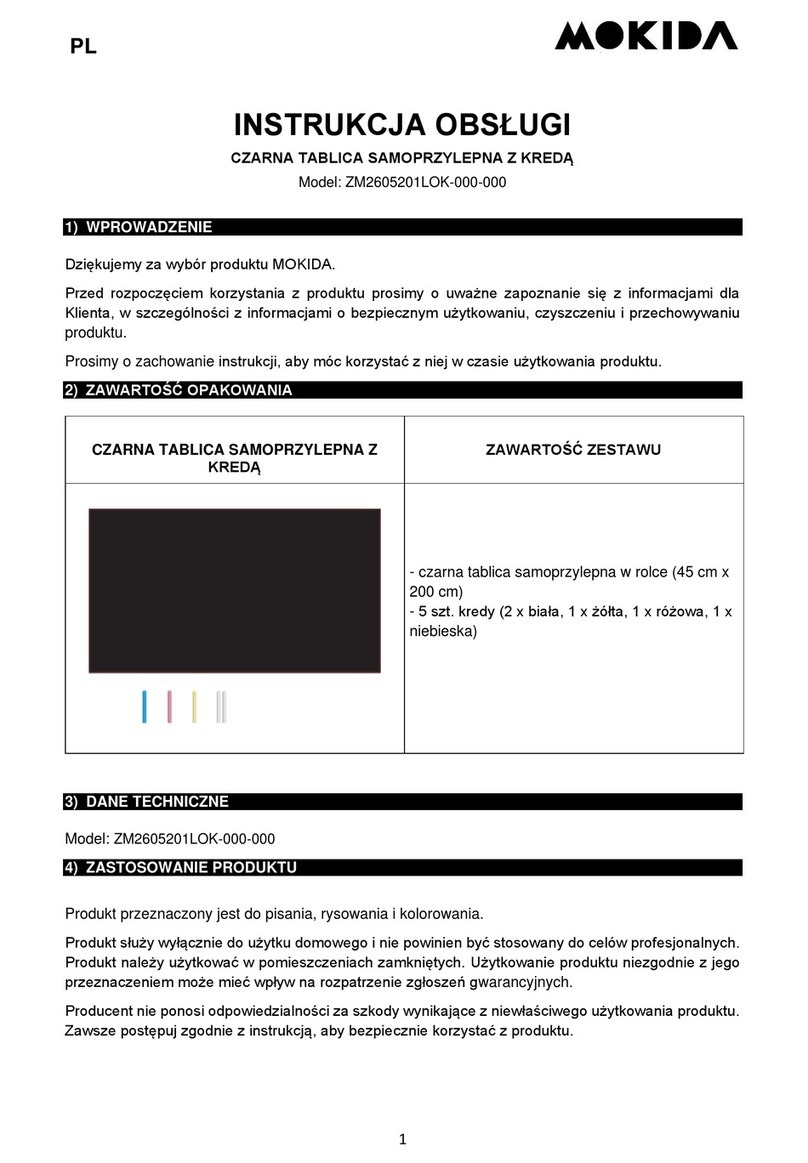
MOKIDA
MOKIDA ZM2605201LOK-000-000 user manual

Hope Education
Hope Education 5MP USB visualiser manual
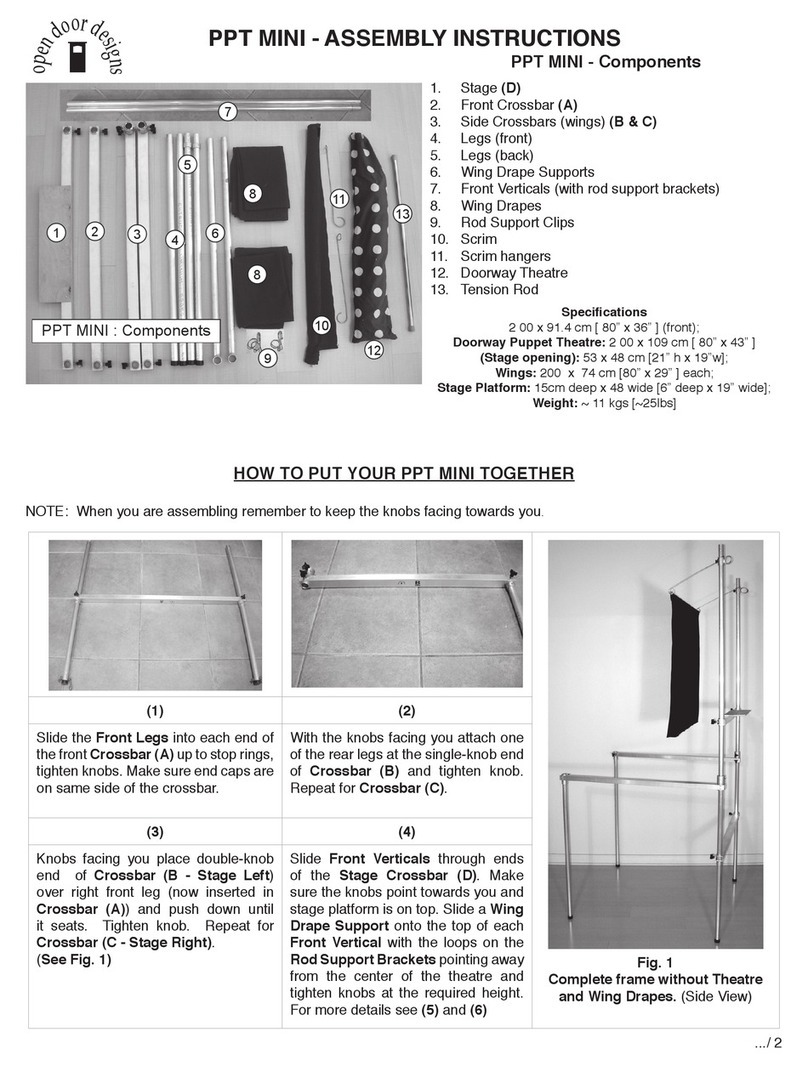
OPEN DOOR DESIGN
OPEN DOOR DESIGN PPT MINI Assembly instructions
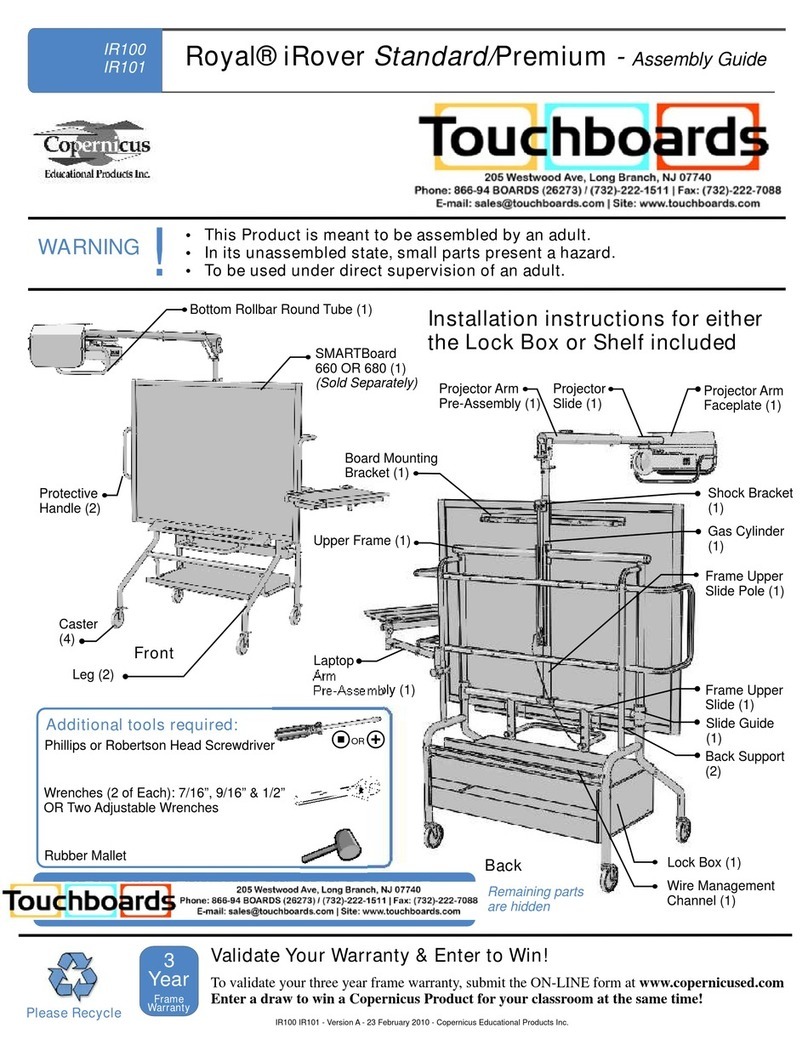
Touchboards
Touchboards Royal iRover Standard Assembly guide
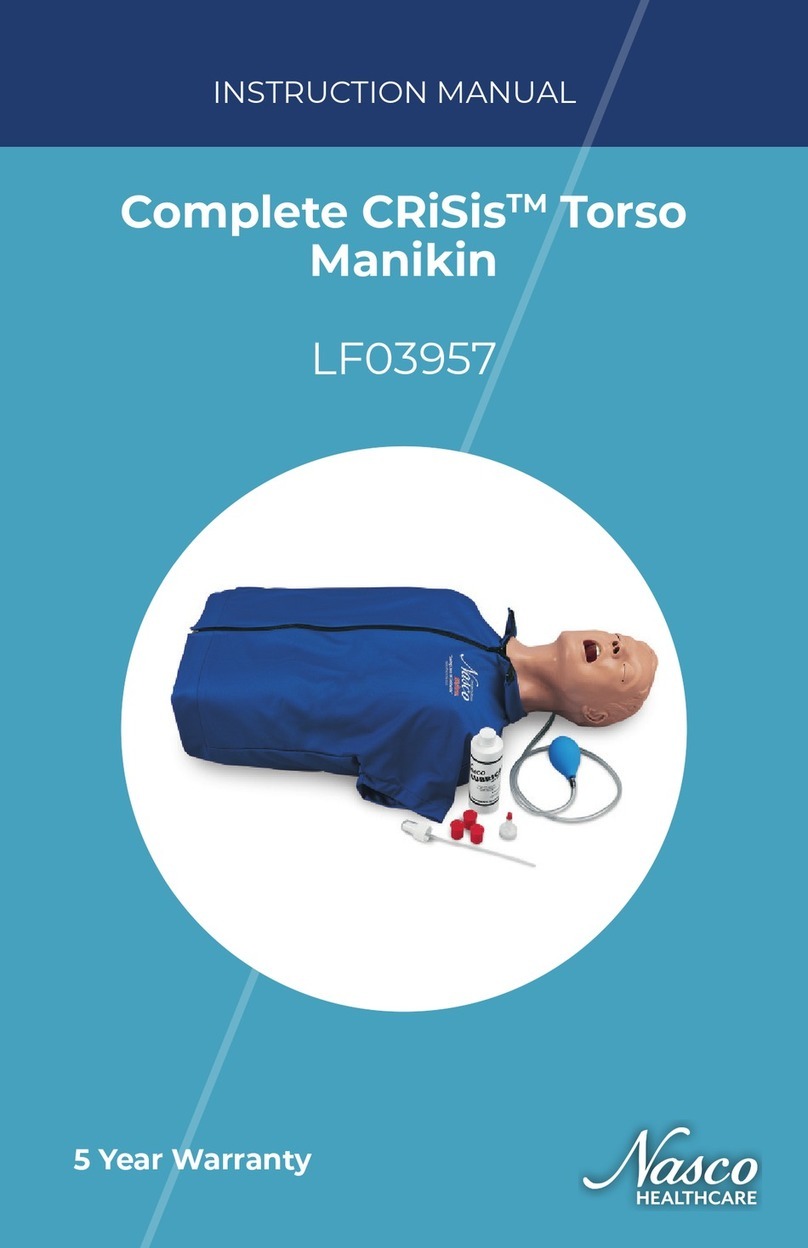
Nasco
Nasco CRiSis LF03957 instruction manual

Horizon Educational
Horizon Educational FCJJ-44 Assembly guide
